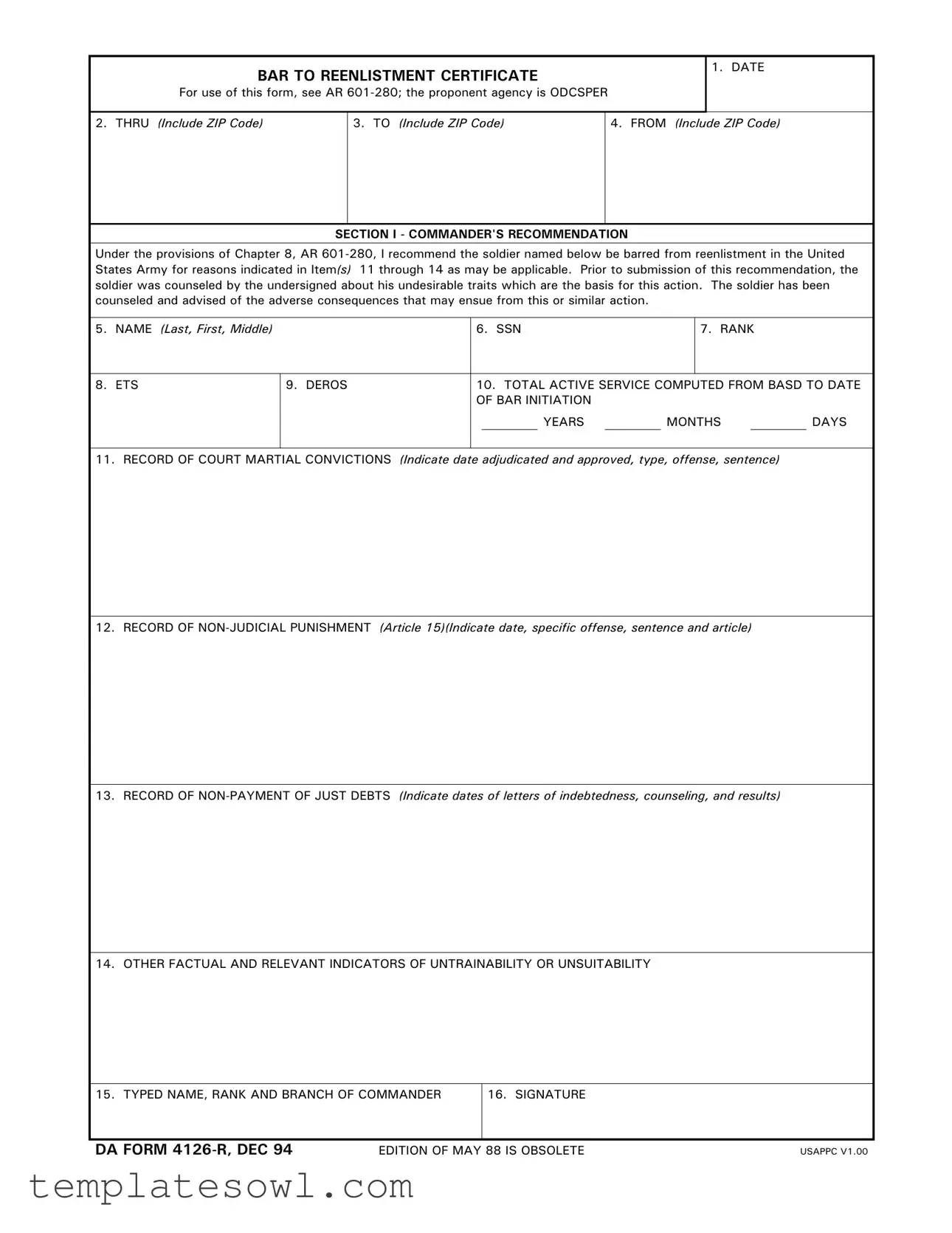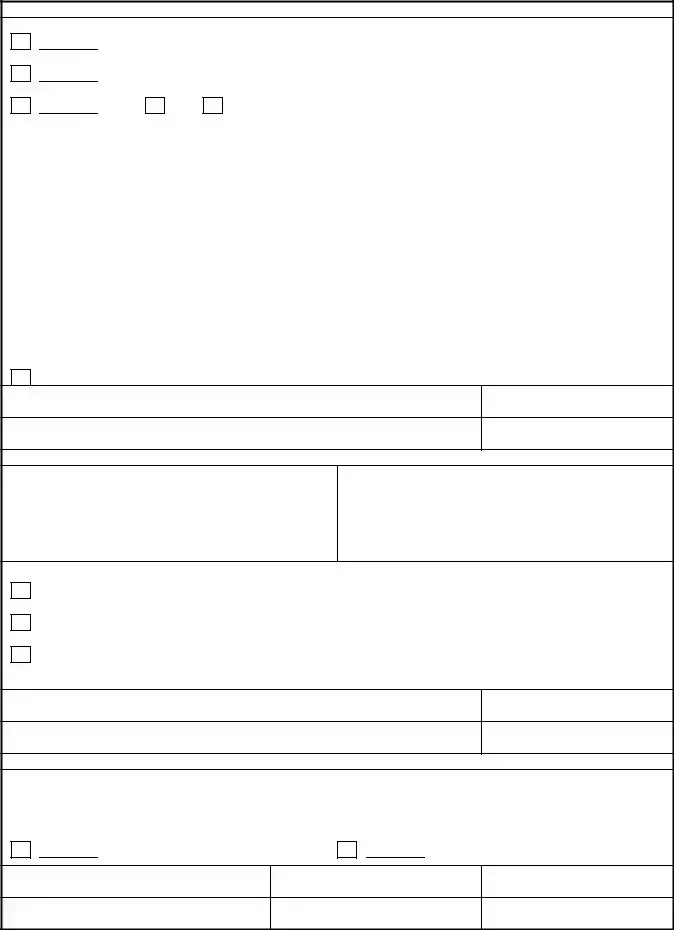What is the purpose of the DA Form 4126-R?
The DA Form 4126-R is used to formally recommend a soldier for a bar to reenlistment in the United States Army. This form documents the soldier's undesirable traits and records any relevant incidents such as court martial convictions, non-judicial punishment, or financial issues. Its purpose is to ensure that commanders have a structured approach to making informed decisions regarding a soldier's future in the Army.
Who can initiate the bar to reenlistment process?
The initiation of the bar to reenlistment process typically starts with the soldier's commander. The commander must evaluate the soldier’s conduct and performance, then counsel the soldier on their undesirable traits before filling out the DA Form 4126-R. This ensures that the soldier is fully aware of the reasons behind the recommendation.
What are the implications for soldiers who receive a bar to reenlistment?
Receiving a bar to reenlistment can significantly affect a soldier’s military career. It may prevent them from reenlisting in the Army, which could lead to the end of their military service. Moreover, soldiers should understand that this action may have an impact on future opportunities, including promotions or special assignments. The form also provides soldiers the right to appeal the decision, thus allowing them to contest the recommendation if they choose.
How does the appeal process work if a soldier wishes to contest the bar?
If a soldier decides to appeal the bar to reenlistment, they are required to submit their appeal within seven days of being notified of the recommendation. The DA Form 4126-R includes a section where the soldier can check their intent to appeal or decline to do so. This timely response is crucial, as it enables the proper authorities to review the case and make an informed decision based on the appeal.
What information is required for the form's completion?
To complete the DA Form 4126-R, several key pieces of information are necessary. This includes the soldier’s name, Social Security Number, rank, and the specific reasons for the recommended bar to reenlistment. Details such as records of court martial convictions, non-judicial punishments, and indications of untraining or unsuitability must also be documented. Ensuring accuracy and completeness helps protect both the soldier's rights and the integrity of the process.
Where should the completed form be submitted?
After the appropriate sections of the DA Form 4126-R have been completed and reviewed, it must be submitted to the servicing Personnel Services Branch (PSB). This is critical for the official posting and filing of the document in the soldier's Master Personnel Record Jacket (MPRJ). Proper submission ensures that all actions taken regarding the bar to reenlistment are officially recorded.


